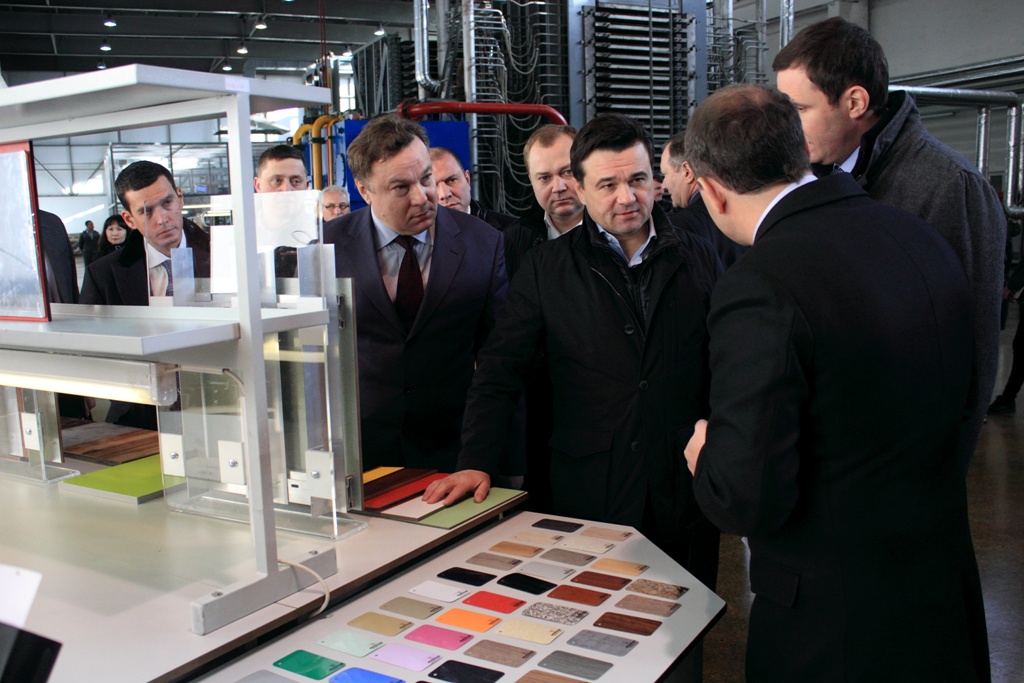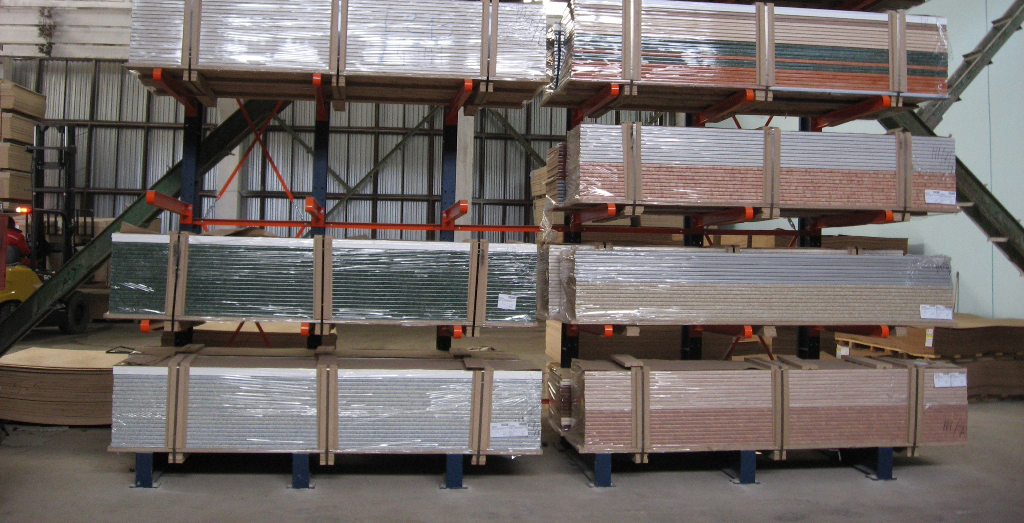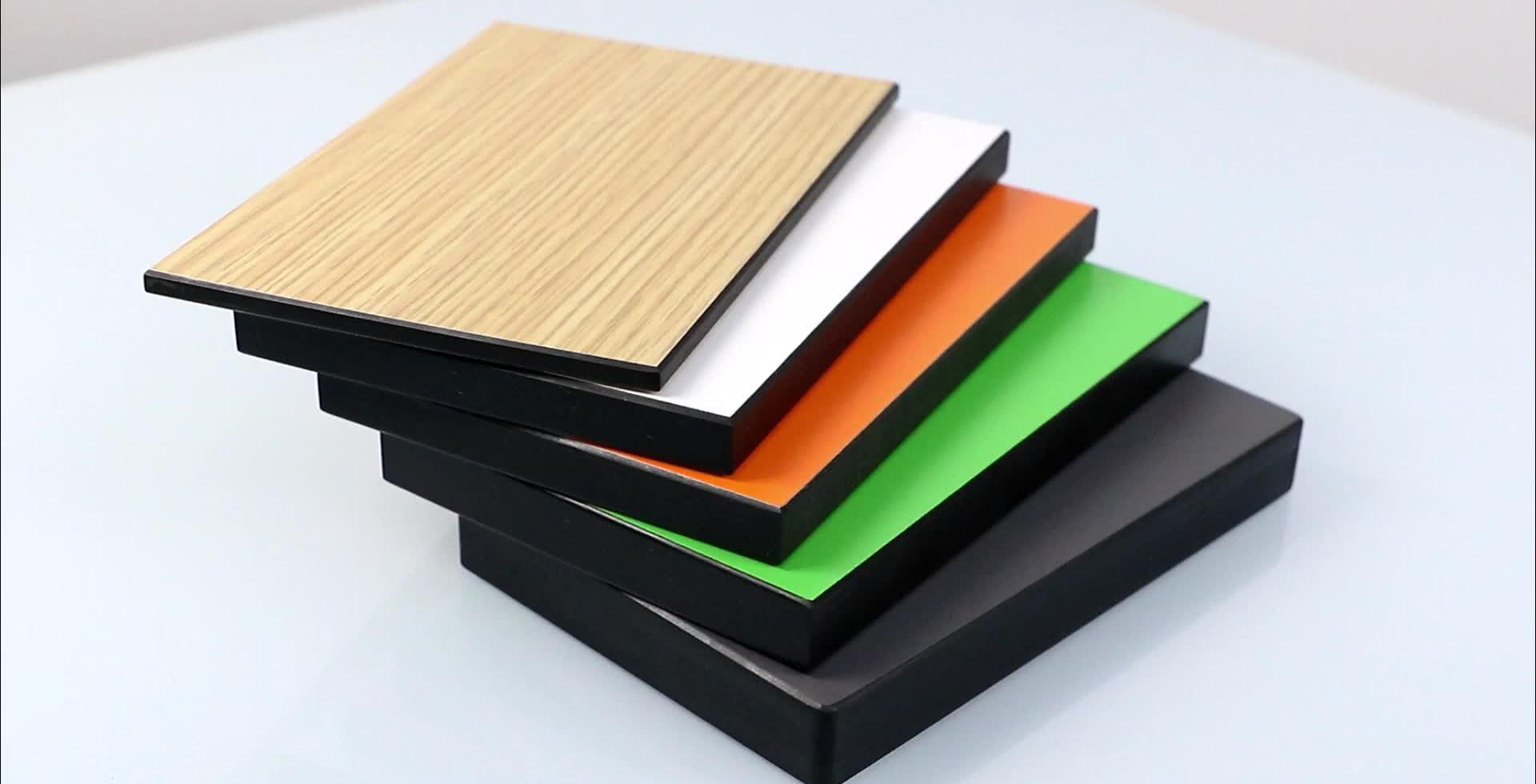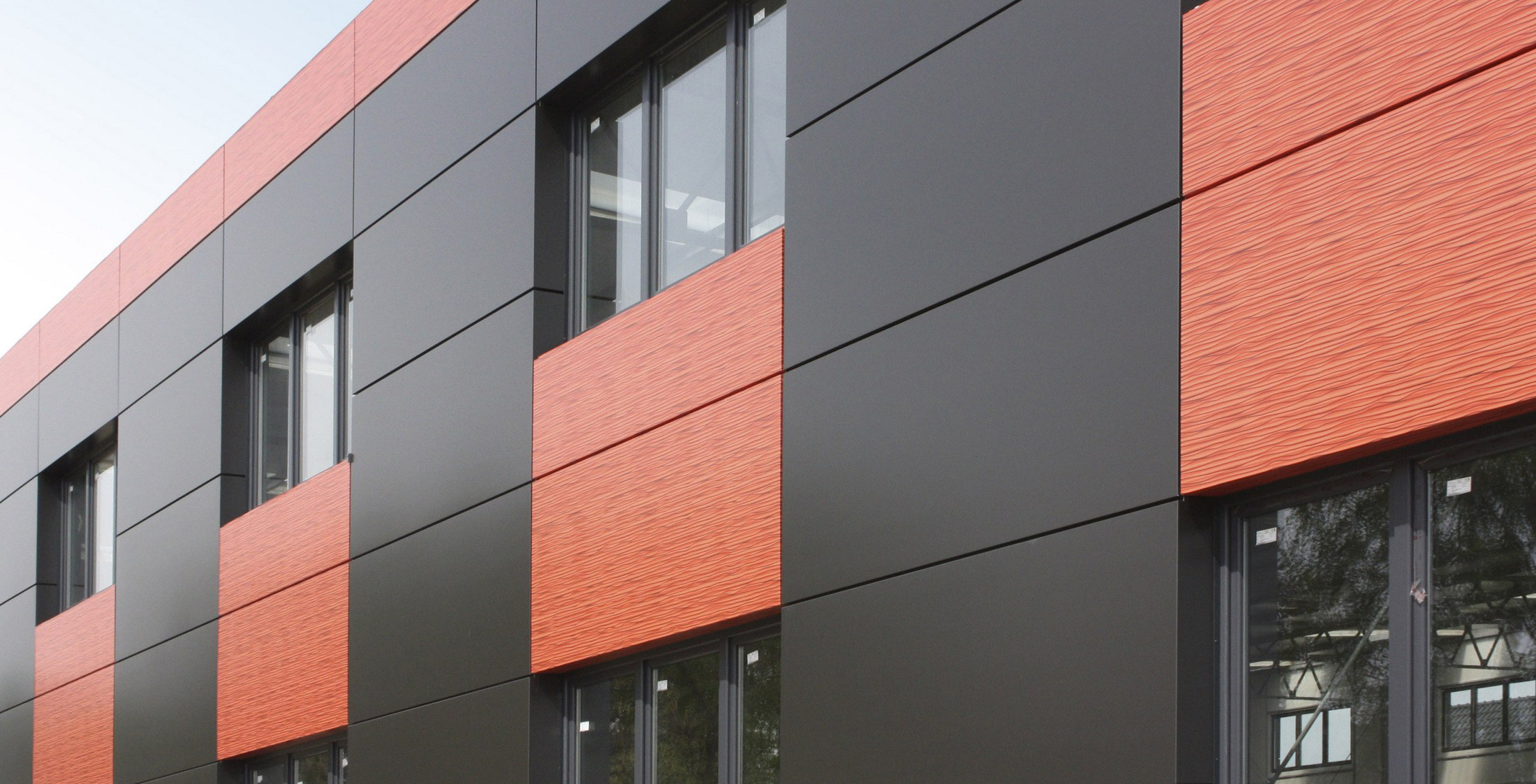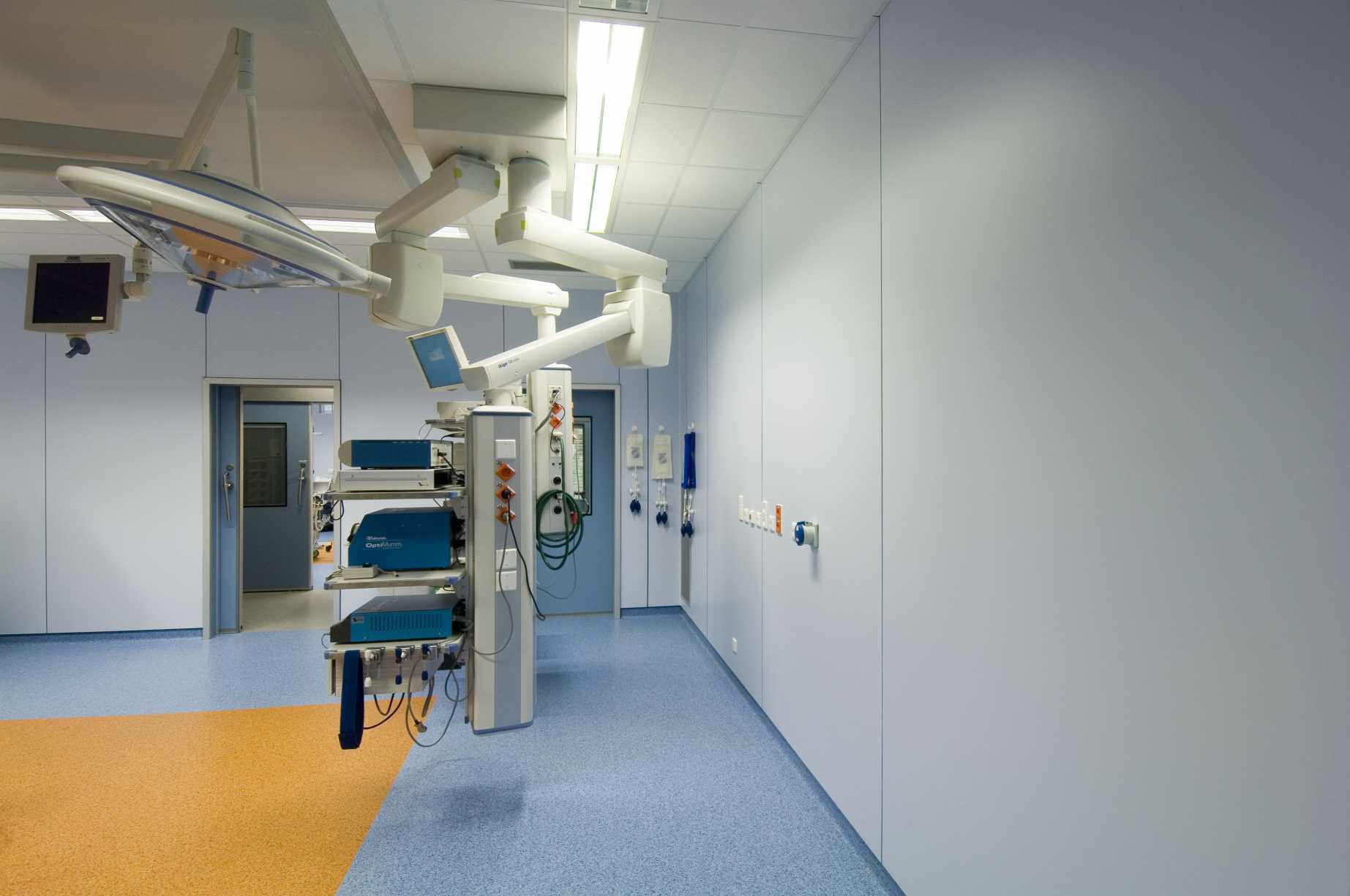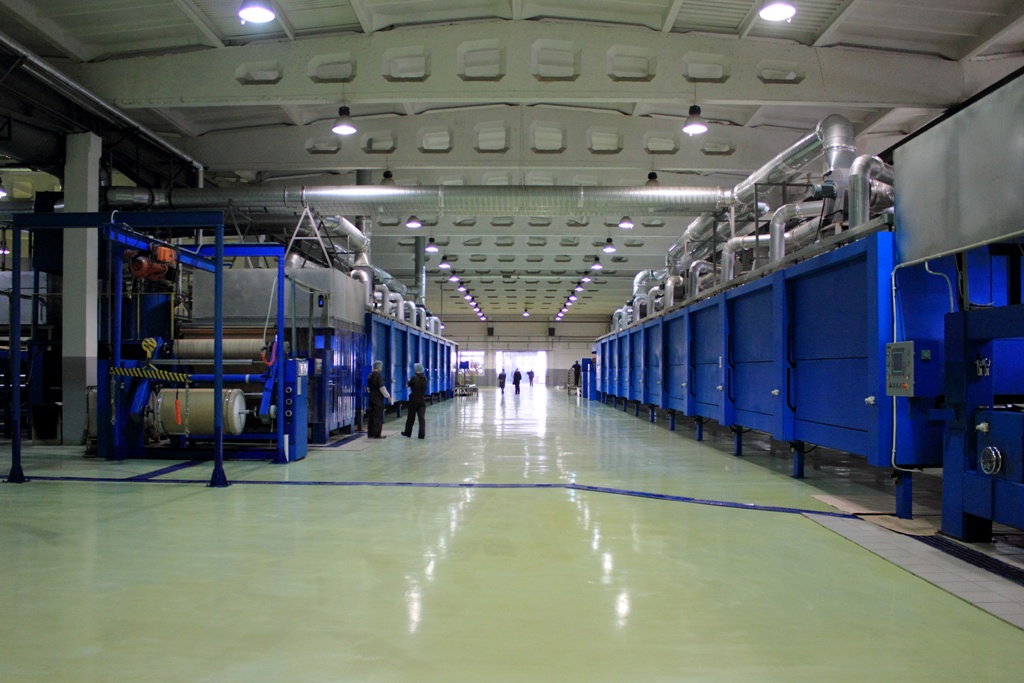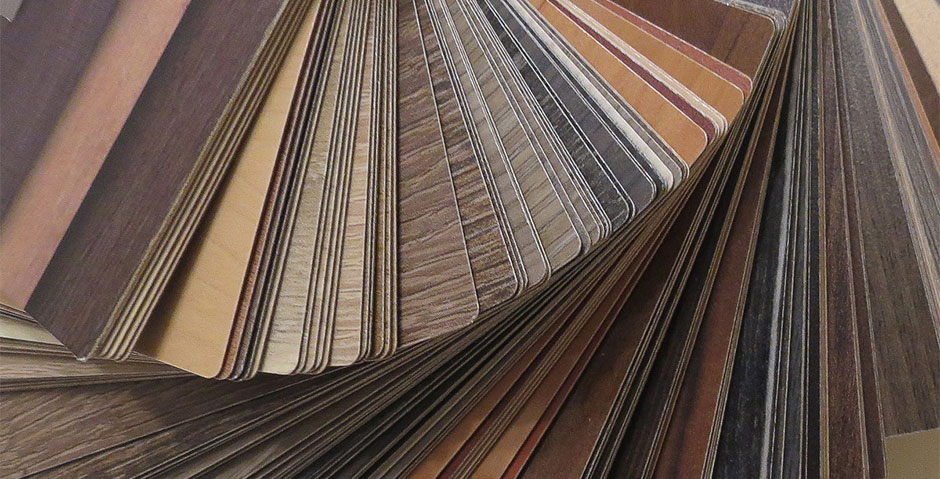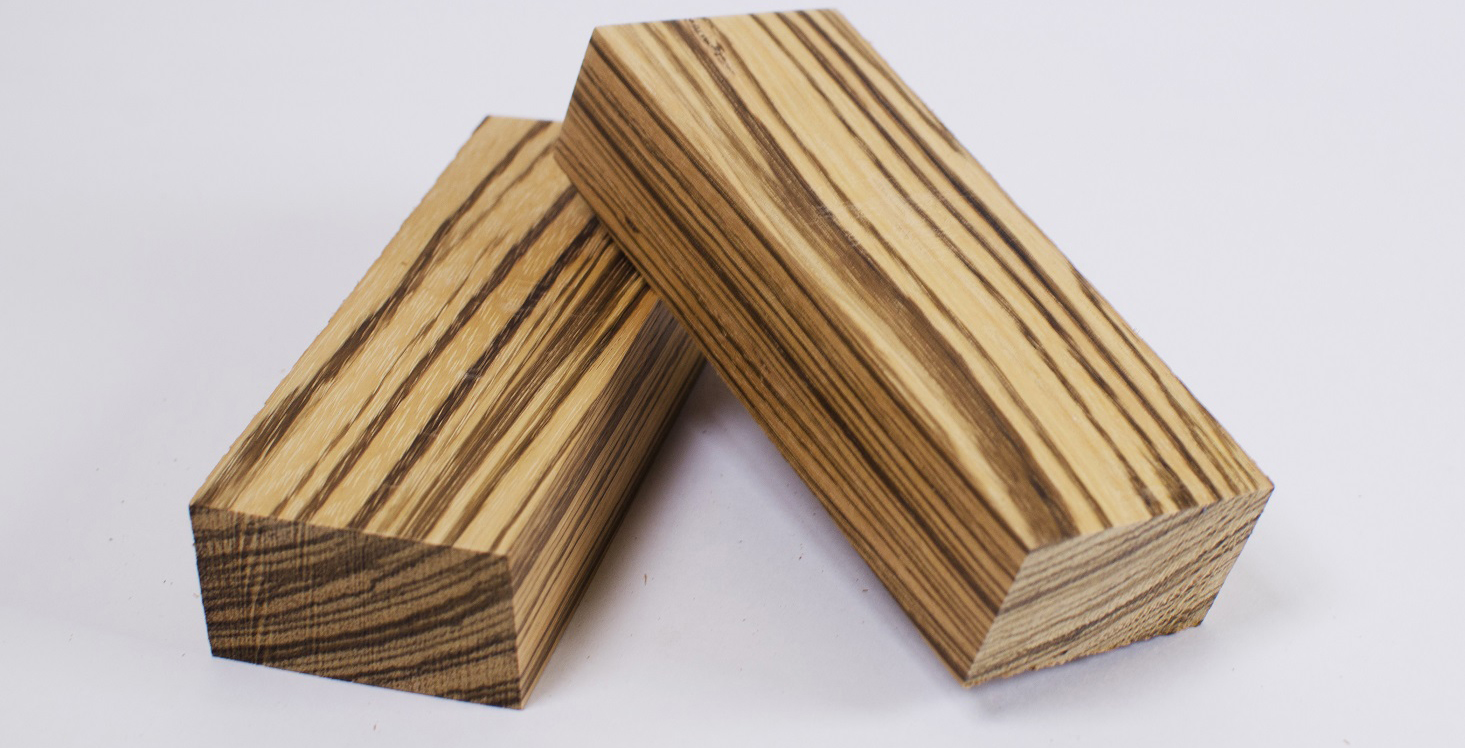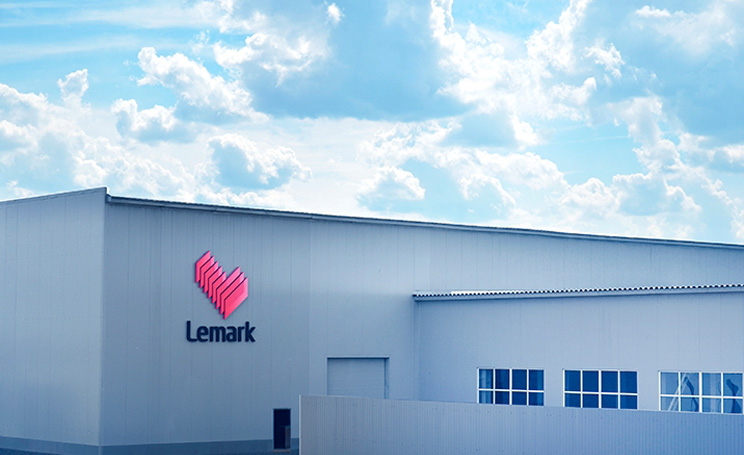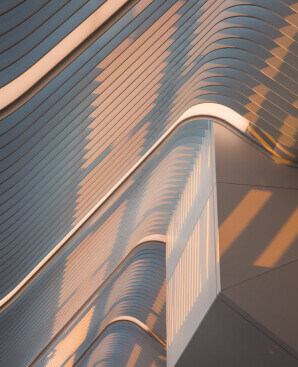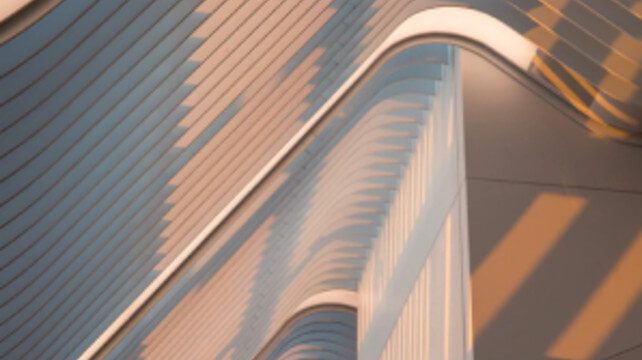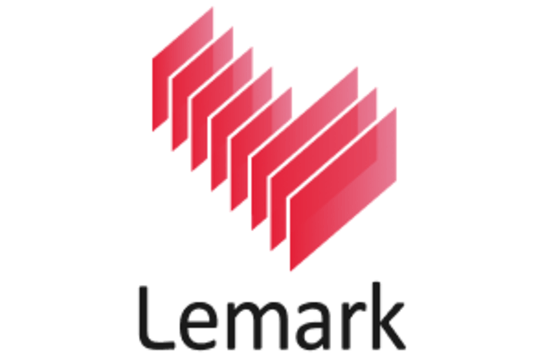Decorative paper-layered plastic of the Lemark trademark (hereinafter referred to as DBSP or HPL plastic) is produced by pressing decorative paper impregnated with melamine-formaldehyde resin and kraft paper impregnated with phenol-formaldehyde resin of special grades. Pressing is carried out on a hydraulic press at high temperature and high pressure, which significantly increases the mechanical strength of the plastic.
Plastic is used as a structural, technological and finishing material, a composition of railway transport and subways, premises for marine equipment, for interior decoration on ships, mechanical engineering, automotive, elevator construction, medical industry, electrical industry, trade, agriculture, furniture production, as packing materials, elements of internal and external finishing of buildings and structures, ventilated facades in construction in accordance with the requirements of current regulatory documents.
Parameters and characteristics
Climatic version - U in accordance with GOST 15150 (Plastic retains its properties at temperatures from minus 50 ° C to plus 60 ° C).
Sizes of plastic sheets: Length: 3050 mm; Width: 1300 mm; 1315 mm; 1600 mm. Deviations in the length and width of the sheet are not more than ± 5 mm. Deviation from squareness is not more than 1.5 mm per 1 m of the sheet.
Maximum deviations in thickness depending on the thickness of the laminated chipboard sheet:
| Thickness, mm | tolerance, mm |
| 0,6 ≤ S ≤ 1,0 | ± 0,10 |
| 1,0 < S ≤ 2,0 | ± 0,15 |
| 2,0 < S ≤ 2,5 | ± 0,18 |
| 2,5 < S ≤ 3,0 | ± 0,20 |
| 3,0 < S ≤ 4,0 | ± 0,25 |
| 4,0 < S ≤ 5,0 | ± 0,30 |
| 5,0 < S≤ 30,0 | ± 0,35 |
Plastic is made with one or two decorative sides, plain or patterned.
The front surface of HPL plastic sheets is smooth, without blisters, glossy, matte or has another special surface finish in accordance with the samples from the manufacturer's catalog.
The appearance of the front surface of HPL plastic meets the following requirements::
| indicators | norms |
| Gloss unevenness (in case of a glossy surface). | Allowed on all sheet edges, no more than 20 mm wide |
| Scratches from mechanical damage and prints from scratches on the press plates. | Allowed 10 mm per 1 ㎡ of sheet and in proportion to the size of the investigated plastic sheet, the total allowable length of damage can be concentrated in one defect or scattered in an unlimited number of small defects. |
| Cracks on the surface from internal stress. | Allowed 10 mm per 1 ㎡of sheet and in proportion to the size of the investigated plastic sheet, the total allowable length of damage can be concentrated in one defect or scattered in an unlimited number of small defects. |
| Foreign inclusions (except point on paper, allowed by standards and specifications for paper), defects, resin curing. | Allowed 1 mm2 per 1 ㎡of sheet and in proportion to the size of the investigated plastic sheet, the total allowable area of contamination can be concentrated in one spot or scattered in an unlimited number of small defects |
| Printing defects (differences in the intensity and color of the picture, non-printing, streaks on the paper) | Not allowed |
| Cutting defects, chips and other defects of the edges of the front surface | Allowed at a distance from the edge of the sheet no more than 5 mm along the perimeter of the sheet. |
| Broken corners | One broken corner ≤ 3cm or two broken corners ≤ 1.5cm are allowed. On one sheet |
| Curing defects | Slight surface irregularities are allowed. |
| flatness |
A deviation from flatness is allowed for plastic with one decorative surface:
|
Physical and mechanical properties of HPL plastic following requirements:
| indicators | norms |
| 1. Breaking stress in bending, MPa (kgf /с㎡) for all thicknesses, not less | 98,0 (1000) |
| 2. Hydrothermal resistance of the front surface, change in appearance | There should be no cracks, blisters, delamination, loss of gloss |
| 3. Thermal resistance of the front surface at a test temperature of 180 ° C, change in appearance | There should be no changes in surface or color, with the exception of slight loss of gloss |
| 4. Impact resistance of the surface when a steel ball Ø 42.8 mm falls from a height of 100 cm. | There should be no cracks and delamination of the front surface in the places where the ball falls. The print diameter should not exceed 10 mm |
| 5. Resistance to contamination with household and household substances, change in appearance | There should be no change in the color and appearance of the front surface. |
| 6. Hardness of protective and decorative coating, N | Not less than 2 |
| 7. Resistant to cigarette burn, change in appearance | no discoloration, cracks and blisters, except for a slight change in gloss (in the case of a glossy surface of the HPL) |
| 8. Stability of linear dimensions, no more than % | 0,4 |
| 9. Tensile strength, MPa (kgf / с㎡) for all thicknesses, not less | 98,0 (1000) |
|
10. Linear thermal expansion coefficient, no more:
|
|
Indicators of resistance to boiling in water (increase in mass and thickness), depending on the initial thickness of the plastic:
| Thickness of LBSP, mm | Mass increase,%, no more | Increase in thickness,%, no more |
| 0,6 ≤ S ≤ 1,0 | 16 | 19 |
| 1,0 < S ≤ 1,5 | 10 | 12 |
| 1,5 < S ≤ 2,0 | 7,5 | 8,5 |
| 2 < S ≤ 2,5 | 5,5 | 6,5 |
| 2,5 < S ≤ 3 | 4,5 | 5 |
| 3 < S ≤ 5 | 4,0 | 4,0 |
| 5 < S ≤ 30 | 2,0 | 2,5 |
